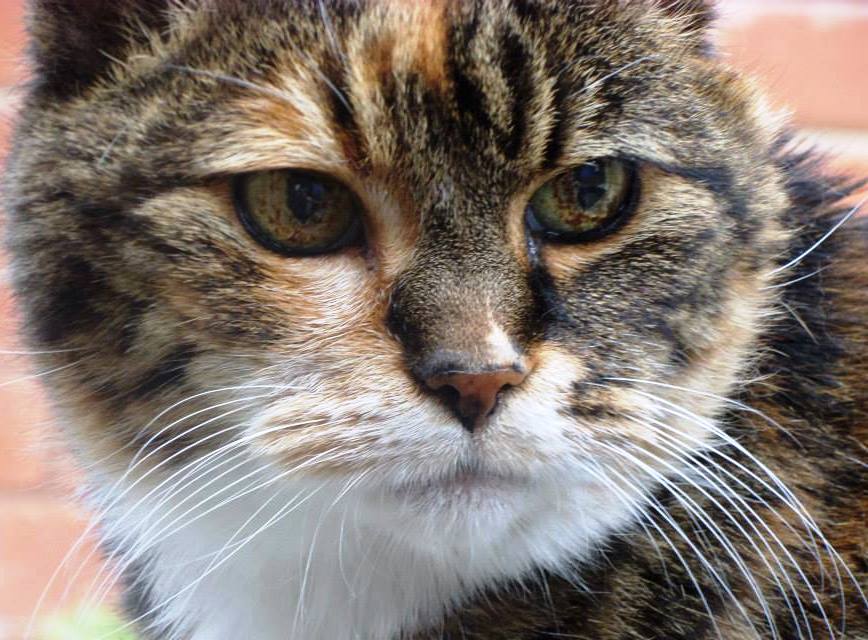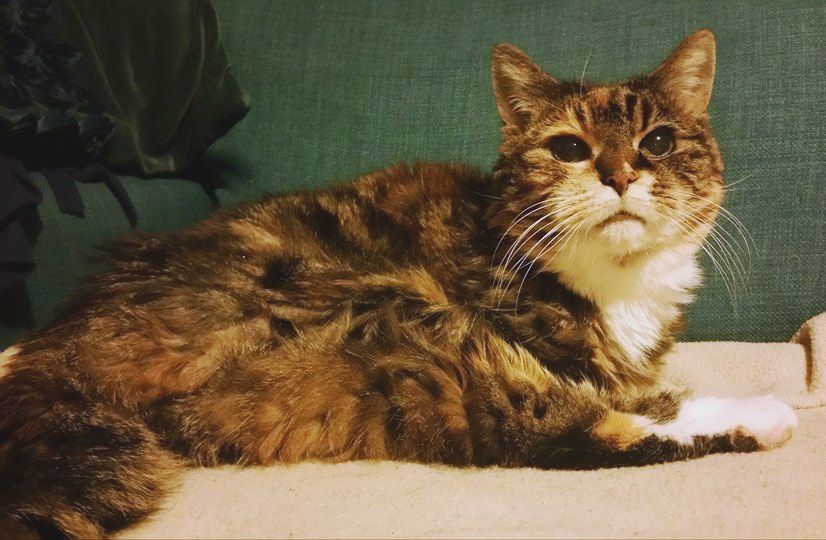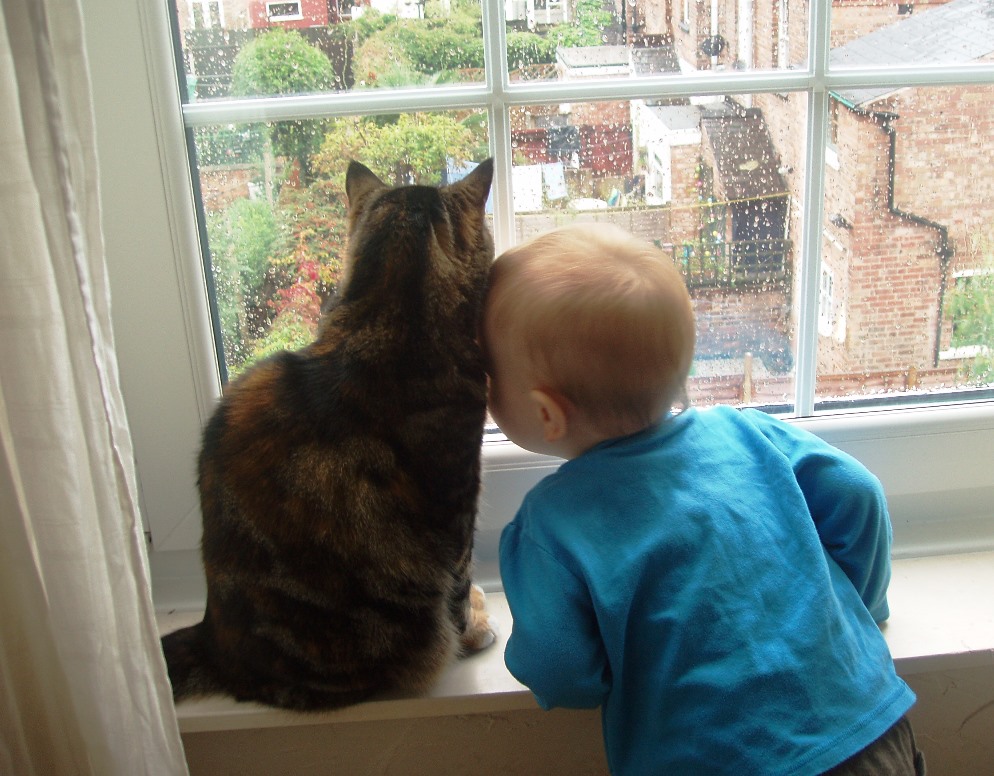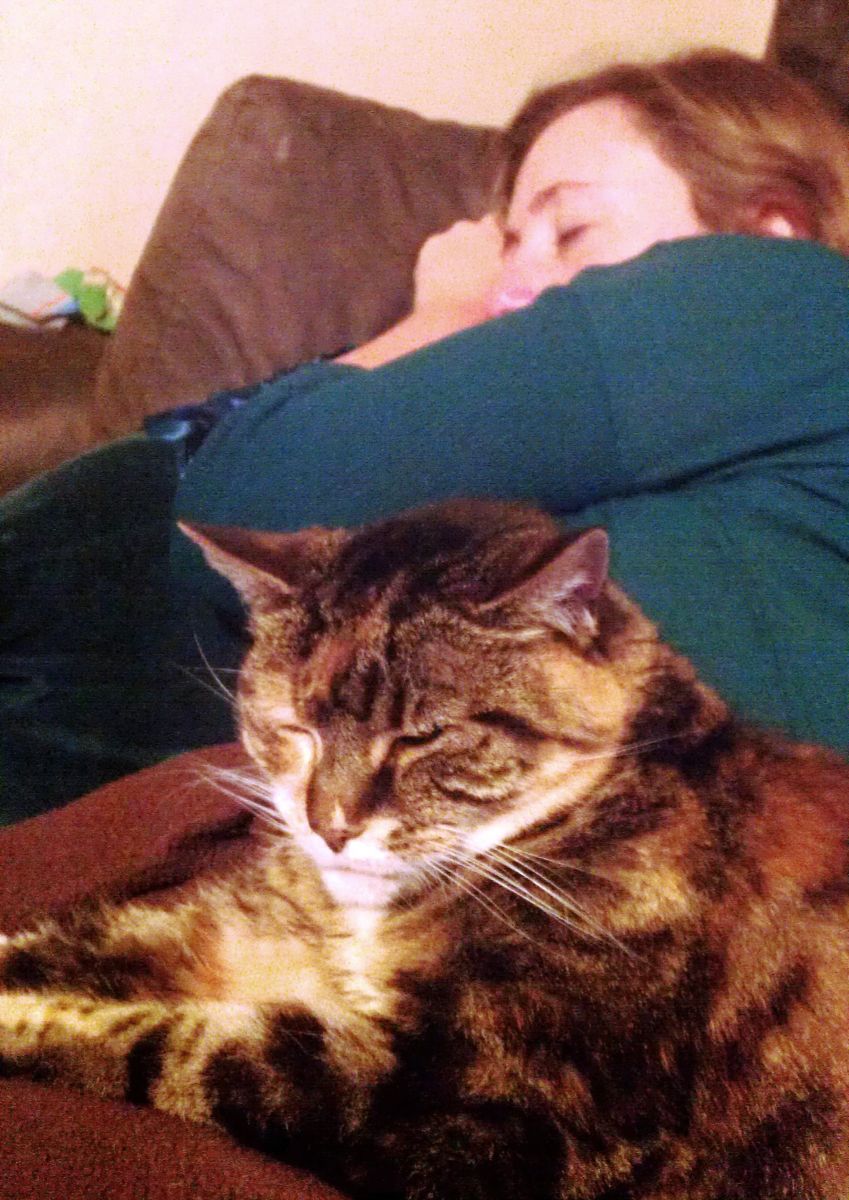|
Lessons in pet bereavement: More than ‘just’ a catEmma Heasman is a freelance copywriter who works from her home office. Stone was born in 1994 and died on Friday 22nd July 2016. She was Emma’s best friend, house mate and colleague (i.e. keyboard warmer and chief distractor) for almost 22 years. Gareth loved her for nearly as long. I can hardly believe that it’s a year today since our beloved cat, Stone, died just weeks shy of her 22nd birthday. That’s 365 days since I last stroked her, 365 days since I last heard her meow, 365 days since we last cuddled up side by side. A year that’s gone in the blink of an eye and yet stretched out for an eternity. I knew losing Stone would be hard. Looking back, I spent the last two years of her life in a state of anticipatory grief – seeing the end hurtling towards us but not being clear about when it would hit. The stress and responsibility were crushing, as was the feeling of impending tragedy. There were days when I couldn’t think of anything else. People told me we would know when she’d had enough, that there would be a definitive moment when euthanasia would feel absolutely right, but I’m not sure that was true. There was no single moment, just a gentle decline into extreme old age that edged a little further towards us day by day. All I know is that we eventually reached a tipping point where her bad days started to outnumber the good. Her final weekDuring that last week of Stone’s life, the vet thought she might have a urine infection at first but it soon became clear we were dealing with something altogether more serious. I slept on the sofa with her each night and fed her tiny bits of food so she didn’t have to get up. When she did wake, she spent hours pacing, trying to poo or wee, but her brain had simply stopped giving her bladder and bowels the signals they needed to work. She was restless and lethargic at the same time. Still interested in life but trapped within an increasingly fragile body. She lost a third of her body weight in just four days – we could see her heart fluttering against her skin, a determined tattoo beating out her intention to stay for as long as possible. But the truth was that she couldn’t get comfortable. Increasingly, her legs would buckle and she would fall over, struggling to get up. In the end, we just couldn’t bear to watch her suffer for a minute longer than necessary. Even knowing this, I still question the timing of our decision. In her final hours, Stone ate a whole pack of ham, she drank water from her pint glass (she would never drink from a bowl – what did we think she was? Some kind of animal?!) and she even found the energy to walk around the garden. Was it too soon? Would she have rallied round for a few more days, weeks or even months? I suppose the answer comes back to that tipping point. The day she died was a better day – not a good one – but probably aided by a steroid injection, the vet’s last-ditch attempt to buy us some time. Would the days that followed have been bad or worse than bad? We’ll never know. We just couldn’t risk it. Stone’s passing was unbelievably peaceful and dignified – aided by a deeply compassionate vet who came to our house to do the deed. We stroked and kissed Stone and told her how much we loved her and how grateful we were that she chose us. After the injection, her heartbeat simply faded away. A gentle sigh escaped her lips. Her eyes fixed on me until the end and then their sheen imperceptibly dulled. It may sound strange, but it was the best of deaths, the most any of us can hope for at the end of a life well lived. Even with that cold comfort, I don’t think I could ever have imagined how hard or what a journey into grief this year would be.
Guilt and more guiltI’ve felt a lot of guilt this year and wondered if I’m dysfunctional because I’ve felt more grief for Stone than for some deeply loved relatives and friends. What does that say about me? Is that wrong? I suppose, rationally speaking, Stone was – in every way that matters - a member of our immediate family. My partner, Gareth, and I spent almost 22 years prioritising her needs, feeding her, sleeping next to her, cuddling her on our laps, letting her in and out of the house, stroking her. That’s nearly 8,000 days. They say you need to repeat an activity 27 times to make it a habit. When you repeat something multiple times a day for 8,000 days, it becomes more than a habit. It becomes a part of you. I also felt guilty because, for the briefest of moments in the silence after she died, her fur still warm under my fingertips, I felt relief that I didn’t have to worry about Stone’s life ending anymore. The train that had been hurtling towards us from the day two years before when she stopped being able to climb the stairs had finally hit. At last, the unknown had revealed itself. I was able to stop thinking, “When will it happen?” because, finally, it had happened. It was like being in a horror film and, at last, seeing what was stalking us. My fear was tangible, the worst had happened. Now I just had to survive, a second at a time. Of course, the relief only lasted for a millisecond. I would give anything to go back to a world that has Stone in it, even if it meant waiting for the train to hit again. A disenfranchished griefDespite Stone’s massive significance to our family, this year I’ve learned why pet bereavement is often referred to as a disenfranchished grief. I have learned that it exists in a state of unbearable loneliness. I suppose all grief does. But when a person dies, we have rituals, we send cards of condolence, recount stories from our shared times, make food for the bereaved, bring the loved one back into the room with our memories. The funeral is attended by friends and family. If the bereaved person cries or gets angry or retreats into themselves, we acknowledge their loss, even if we don’t fully understand the weight of it. It wasn’t like that when Stone passed. We were sent two cards – one from my brother and one from my parents. Beyond that, no-one mentioned her. There were days for months afterwards when I could barely function. I would look for Stone and she wouldn’t be there and the terrifying permanence of knowing that I will never see her again would hit me like a physical blow. But no-one noticed. I was screaming in the middle of a crowded room and no-one could hear me. Immediately following her death, when peeling myself off of the sofa and stemming my constant flow of tears seemed all but impossible, I tried to take a few days off. I work for myself though and when I explained to a client why I needed a couple of work-free days, they quite honestly told me they didn’t ‘give a shit’ that my cat had died and that it wasn’t like I’d lost a member of my family. In fact, they told me they weren’t interested in ‘excuses’ with an almost audible eye-roll. Needless to say, they’re not a client anymore. Still, after that, I didn’t mention Stone to any of my clients but my work suffered in those long months of grief. My life suffered, as did all our lives. I tried to talk about Stone and frequently found myself bringing her into conversation but it seemed to make people uncomfortable. I found that very few people want to hear or expect you to talk about a dead pet. I’ve sometimes felt that I was embarrassing other people – or, in their eyes, embarrassing myself – and they perceived me as being strange or emotionally immature for being so bereft about an animal. |




